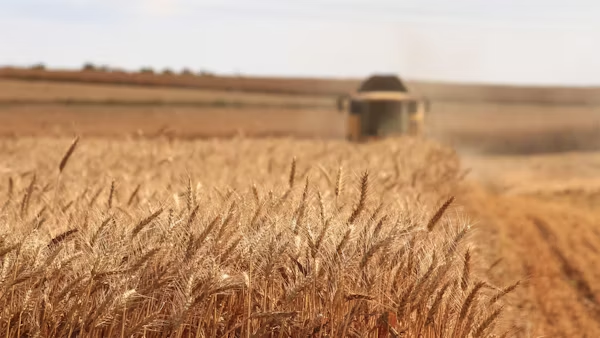Agriculture has always been the backbone of many economies, providing food, raw materials, and livelihoods for millions across the globe. Yet, farming remains one of the most unpredictable professions. From harsh weather conditions to pest attacks, fluctuating market prices, and other unforeseen challenges—farmers constantly face uncertainties that can impact their harvest and income. This is where harvest insurance becomes a game-changer. It acts as a financial safety net, ensuring farmers don’t lose everything when nature or market volatility strikes.
This article explores the concept of harvest insurance, its importance, how it works, different types available, and how farmers can make the most out of it. Let’s dive deep into the world of agricultural protection and see why having the right insurance is essential for a sustainable farming future.
Understanding Harvest Insurance
Harvest insurance, often known as crop insurance, is a policy designed to protect farmers against the loss of crops or income due to natural disasters, diseases, or price fluctuations. It provides coverage for a variety of risks, helping farmers maintain stability and confidence even during uncertain agricultural seasons.
Unlike other types of insurance, harvest insurance directly connects to the agricultural cycle—covering from planting to harvesting. This makes it unique, as it factors in the unpredictable nature of weather, soil, and environmental conditions that can heavily affect production.
Essentially, it’s not just a policy—it’s a partnership that helps farmers secure their hard work, investment, and livelihood.
Why Harvest Insurance Matters in Today’s World
The climate crisis has changed the way farming operates. Droughts, floods, storms, and changing weather patterns are becoming more frequent and severe. These conditions can wipe out an entire harvest in a matter of days, leaving farmers financially vulnerable.
Harvest insurance serves as a financial cushion, offering peace of mind to those who depend on their crops for income. It empowers farmers to take risks with innovative techniques and new crop varieties, knowing they have a safety net in case things don’t go as planned.
Moreover, harvest insurance helps stabilize food supply chains. When farmers are insured, the likelihood of complete production collapse is minimized, ensuring food remains available for markets and communities even during hard times.
How Harvest Insurance Works
The process of harvest insurance is fairly straightforward. Farmers choose a policy based on the type of crops they grow and the level of risk they face. Here’s how it typically works:
Policy Selection – Farmers assess their farm’s risks and choose the right insurance plan that suits their needs.
Premium Payment – Just like other insurances, farmers pay a premium amount depending on factors like crop type, location, and coverage extent.
Coverage Period – The insurance covers a specified period, usually from planting until harvest.
Loss Assessment – If a loss occurs due to covered risks such as drought, flood, or pest infestation, the insurer evaluates the damage.
Claim Settlement – After verification, the insurance company compensates the farmer for their losses, helping them recover financially.
This system ensures that farmers don’t face complete ruin when nature works against them. Instead, it gives them a chance to recover and replant for the next season.
Different Types of Harvest Insurance
There are several types of harvest insurance available, and choosing the right one depends on a farmer’s specific needs and circumstances. Below are the most common types:
Yield-Based Insurance
This type compensates farmers when their crop yield falls below the guaranteed level. For example, if a farmer expects 100 tons of wheat but only harvests 70 due to drought, the insurance covers the shortfall.
Revenue-Based Insurance
Here, the focus isn’t just on the yield but also on the income. It protects against revenue losses caused by low prices or poor yields, ensuring financial stability even when markets fluctuate.
Weather Index Insurance
Instead of measuring actual crop loss, this insurance type uses weather parameters like rainfall, temperature, or humidity as triggers. If the conditions go beyond set limits (like a drought or excessive rain), payouts are automatically made.
Area-Based Insurance
This covers all farmers within a specific geographical area. If the area faces a calamity, all farmers receive compensation based on average losses, rather than individual assessments.
Each type has its benefits, and modern insurance agencies often offer customized solutions based on location, crop type, and risk exposure.
Benefits of Harvest Insurance for Farmers
Harvest insurance offers a range of benefits that go beyond simple compensation. It’s about stability, confidence, and long-term growth.
Financial Protection: Farmers can recover their investment costs even if crops fail, preventing debt or financial breakdown.
Encourages Innovation: With a safety net, farmers are more open to experimenting with new seeds, techniques, or technologies that can boost productivity.
Access to Credit: Many banks prefer lending to insured farmers since they pose lower financial risks. This increases access to agricultural loans.
Sustained Food Production: When farmers stay in business after losses, overall food supply remains stable, contributing to food security.
Peace of Mind: Farming becomes less stressful when there’s assurance that unexpected challenges won’t lead to complete financial disaster.
The Role of Independent Insurance Agencies
Independent insurance agencies play a crucial role in helping farmers choose the right harvest insurance plans. Unlike agencies tied to big corporations, independent ones work directly for the farmer, not for the insurer.
They evaluate the unique challenges and risks of each farm, recommend the most suitable policy, and provide personal support during claim settlements. This client-first approach ensures that farmers get tailored solutions instead of one-size-fits-all plans.
By working with such agencies, farmers can better understand coverage options, premiums, and claim processes—making the whole experience smoother and more beneficial.
Challenges Farmers Face Without Harvest Insurance
Farming without insurance can be like walking a tightrope without a safety net. One natural disaster or pest outbreak can destroy months of labor and financial investment. Without insurance, farmers face:
Complete Financial Loss: A bad season could wipe out savings and investments.
Debt Traps: Many farmers are forced to take high-interest loans to recover from losses.
Reduced Productivity: Fear of losses may prevent them from using advanced or risky techniques.
Food Insecurity: A widespread loss of crops impacts local and national food supply.
Harvest insurance helps prevent these outcomes, providing the resilience farmers need to sustain their livelihoods.
How to Choose the Right Harvest Insurance Policy
Selecting the right policy can be overwhelming, especially with multiple options available. Here’s what farmers should consider:
Understand the Risks: Assess the main threats in your area—floods, droughts, pests, etc.—and choose a policy that covers them.
Compare Plans: Look at multiple providers and compare coverage, premiums, and benefits.
Check Claim Process: A transparent and simple claim process is crucial for timely compensation.
Review Coverage Limits: Ensure the insured amount is sufficient to cover your potential losses.
Seek Expert Advice: Independent insurance advisors can help you find the most cost-effective and relevant plan.
A thoughtful decision at the beginning of the season can make all the difference when challenges arise later.
Technology’s Role in Modern Harvest Insurance
Modern technology has revolutionized harvest insurance. From satellite imaging to AI-driven damage assessments, insurers now rely on cutting-edge tools to make the process faster and more accurate.
Remote Sensing: Drones and satellites help assess crop health and losses with precision.
AI and Data Analytics: Predictive algorithms forecast risks and help design better coverage plans.
Digital Claims: Farmers can now file claims online, reducing paperwork and delays.
These innovations not only make insurance more efficient but also more accessible to small-scale farmers who previously found it complex or costly.
Government Support and Subsidized Programs
In many countries, governments support harvest insurance programs to encourage farmers to adopt them. Subsidies often reduce premium costs, making it affordable for small farmers.
For instance, public-private partnerships between governments and insurance companies ensure wide coverage, even in remote rural areas. These programs not only help farmers but also contribute to national food security and rural development.
By promoting such initiatives, governments help build resilient agricultural systems capable of withstanding the challenges of climate change.
A Sustainable Future Through Harvest Insurance
Harvest insurance isn’t just about protecting crops—it’s about creating a sustainable agricultural future. It fosters stability, encourages innovation, and supports the rural economy.
As farming continues to evolve with technology and climate change, insurance will remain a key factor in ensuring that agriculture remains a viable and rewarding livelihood.
Farmers who embrace insurance are not just securing their current harvest—they’re investing in the future of their land, their families, and the food systems that sustain us all.
Conclusion
Harvest insurance stands as a pillar of strength in the world of agriculture. It transforms uncertainty into opportunity by shielding farmers from unpredictable challenges. In an era of increasing climate risks and market fluctuations, having reliable harvest insurance is no longer optional—it’s essential.
Independent insurance agencies make this process personal and empowering, ensuring that every farmer receives the right coverage for their unique situation. With the right protection, farmers can focus on what they do best—feeding the world.
FAQs About Harvest Insurance
1. What is harvest insurance?
It’s an insurance policy that protects farmers from crop or income losses caused by natural disasters, pests, or market fluctuations.
2. How does harvest insurance help farmers?
It provides financial stability and peace of mind, allowing farmers to recover from unexpected losses.
3. Is harvest insurance mandatory?
No, it’s usually optional, but highly recommended for anyone engaged in commercial or small-scale farming.
4. Who offers harvest insurance?
It’s available through both government programs and private or independent insurance agencies.
5. Does it cover all types of crops?
Most policies cover a wide range of crops, but specific coverage depends on the insurer and region.
6. How can I apply for harvest insurance?
Farmers can contact local insurance agencies or government offices specializing in agricultural programs to find suitable plans.







